You are who you are — and your 'zodiac' sign (still) has not changed.
As an old prank resurfaces, here is a Planet Waves reprint from 2011, with a new introduction and complete history of the issue.
Note to Readers, 3/4/24 —
Good morning from New York.
The article below was originally published in 2011, the last time the “your sign is wrong” hoax made the news. I see that it’s bobbed to the surface again, with the usual misunderstandings, “corrected” sign dates, and no correct facts.
It’s now 2024, when someone can say, “Show me the curve, bro,” and suddenly a thousand more people think the world is “flat.” This is easy when 1 in 4 people already think the Sun orbits the Earth and nobody can find Kansas on a map.
The reprinted article below is thorough, with several great interviews (Rob Hand, Jonathan Cainer and others) — but it’s a little long for contemporary attention spans, so let me sum up.
The notion of a “13th sign” has its origins in a “nouveau astrology” book Sky Diamonds by Owen Rachleff, published in 1973.
But his messing with astrological philosophy and practice did not “correct” anything. It does not change who you are. It does not reflect a discovery. There is no news here; the guy just wrote another astrology book in an era when they grew on trees. Nobody would even know this story if I hadn’t dug it up.
There are all kinds of astrological concepts floating around, and authors usually need a gimmick to sell a book. For Rachleff, that was “adding a sign to the zodiac.”
And you may imagine how, in 1973, when astrology was considered groovy, an extra sign got a big “like, wow” from the audience. But his concept did not catch on. As I’ll explain in a moment, what we call the signs are merely divisions of the celestial wheel (the apparent path of the Sun) into 12 even sections, like the circle of keys in music. The chromatic scale has 12 notes; there are 12 keys (and derivatives known as modes).
As far as Greek philosophy, 12 is the number (see the article below for details).
Mini Sidebar: Two Paragraphs from Wikipedia
Wikipedia lists other sources for the origin of Ophiuchus and does not include either of mine. Both precede the 1973 book by Rachleff. I am sorting how important the 1930 IAU declaration is, though I’m working with Daniel Giamario to focus his viewpoint on the matter (he considers it of utmost importance and called that to my attention).
The 1970 book referenced below by Steven Schmidt is definitely relevant. It would seem that in the absence of much good information about fixed stars, the Arabic Parts or even the modern planets Uranus, Neptune and Pluto in the 1970s, the idea of “adding signs” was kicking around. From the encyclopedia:
Based on the 1930 IAU constellation boundaries, suggestions that there are "13 astrological signs" because "the Sun is in the sign of Ophiuchus" between November 30 and December 18 have been published since at least the 1970s.[7]
In 1970, Steven Schmidt in his Astrology 14 advocated a 14-sign zodiac, introducing Ophiuchus (December 6 to December 31) and Cetus (May 12 to June 6) as new signs.[8][9] Within 20th-century sidereal astrology, the idea was taken up by Walter Berg in the form of his book, The 13 Signs of the Zodiac (1995).
There is also a reference to a 1977 article by Lee Shapiro, reported by John Mosley of the Griffith Observatory in Los Angeles. The article details how 21 constellations are on or near the ecliptic — but as detailed in this article, that does not make them “signs” of the zodiac.
Note the line, “There have been some attempts to go on the offensive, such as the recent publication Objections to Astrology (Prometheus Books, 1975).” The author of that book was my professor of philosophy, Paul Kurtz, who was also editor of The Humanist. The publication of the assault on astrology in The Humanist is reported in detail in the 1994 book The Moment of Astrology by Geoffrey Cornelius. This has nothing to do with any extra signs, it’s just interesting.
Then it Surfaces as Science Fiction
This idea of an extra sign was floated again in the late 1990s by a science fiction author named John Sladek, who liked to prank astrology. He claimed in a novel that a “13th sign” he called Arachne was “suppressed by the scientific community.” (He got the idea for the sign from Rachleff, and the “suppressed” business sure has become popular.)
That morphed into what is today known as Ophiuchus, and astronomers — who should understand the issue — present it as fact, and because they hold astrology fans as gullible (and they are right, but so are technology fans) they think it’s just innocent fun. Really, it’s an abuse of the trust that people have in them. Seems to come with the territory of “science.”
One of the goals of many of the tawdry kind of astronomers (not those at the top of the field, in my experience) is that they seek to discredit astrology whenever they can. But I wonder the source of the insecurity. What do they believe about life? Is it subject to public scrutiny?
One of the most frequent contemporary commentators on Ophiuchus is Neil deGrasse Tyson, the TV gasbag who barely understands, well, anything much at all. He says the word “Ophiuchus” such that to a dog, it would sound like “you’re an asshole, you stupid idiot,” only he’s talking to you.
Here is an April Fool’s prank I sent his way a few years ago. Nearly everyone thought it was real.
The Tropical Zodiac is a Thing of its Own
What we in the Western world call “the zodiac” is the really called the tropical zodiac. It’s about the Sun’s relationship to latitude lines known as the tropics (the equator, the Tropic of Cancer and the Tropic of Capricorn) — not the constellations.
The tropical sign Aries begins on an equinox, Cancer begins on a solstice, Libra begins on an equinox, and Capricorn begins on a solstice. This involves the angle of the Sun to the Earth and has nothing to do with the stars.
Divide each season in three equal parts (for example, Northern Hemisphere springtime consists of the Sun moving through Aries, Taurus and Gemini) and you have a the 12-sign tropical zodiac.
It’s all and only about what the natural cycles here on the planet’s surface. The signs are never “divided by” the constellations. There is never a “new sign” since the tropical wheel is divided evenly in 12. And there are lots of other constellations, which are not namesakes of signs, that are near or touch the apparent yearly path of the Sun.
All Astrologers Understand Precessional Movement
Because the spinning Earth wobbles very slowly like a top, the solstices and the equinoxes seem to drift against the backdrop of the constellations. They make a complete circle about every 26,000 years.
That’s why the tropical signs don’t match up exactly with constellations that bear similar names. This is called the “precession of the equinoxes.”
It’s probable that the tropical zodiac was invented to solve this problem, so there could be a dependable, Earth-centered metric of time that did not drift (precess) over the years.
The alleged “inaccuracy” is that (for example) the tropical sign Pisces overlays part of the constellation Aquarius. But astrologers have always known this. It’s not news. And why exactly do physicists think their opinion about something they don’t care about and don’t believe in matters? Is there really a bull in Taurus?
There is also a sidereal zodiac (which lines up more closely with the constellations) and it, too, is divided into an even 12 sections (because the constellations vary in size). A well-trained astrologer can read both the sidereal and the tropical charts and comment on the relationship between the two.
Okay that’s your executive summary! Below is the article pretty much as written and illustrated 13 years ago, when we were all much younger.
With love,
PS — Occasionally, something creative does come out, for example a 22-constellation system by British author Catherine Tennant. If you love astrology, this will make you happy. But it’s not because it’s “right” or a “correction.” It’s a great idea by a sincere astrologer who can relate to people. (I’m born under her sign, “The River of Night,” which I love.)
You Are Who You Are: 2011 Planet Waves Reprint
Dear Friend and Reader:
LAST WEEK’S ‘YOUR SIGN IS WRONG’ HOAX that spread like feathers at a pillow fight was a rare trip through the news for the craft of astrology. Every now and then our old profession gathers a little attention, usually due to a misunderstanding or a prediction someone has made.
Once it happened because a president’s wife was discovered to have been using an astrologer, but only your grandparents remember that. This time, it was because an astronomer announced that the dates for the Sun signs were wrong.
The whole show added up to an interesting social experiment, including the mystery of why anyone would believe what an astronomer says about astrology. How exactly would he know what astrologers do, and how they work?
I got several requests for comment from newspapers, and was quoted by the Associated Press and the Minneapolis Star-Tribune (which did the article that went viral, rewriting a barely noticed earlier story). Yet other places ran TV segments on the issue without even consulting an astrologer; why bother?
Since this is a story that is all about astrology, you don’t have to be a media critic to realize that’s a little weird. Often astrologers seem doomed to the fate of prostitutes — to be regarded as invisible. But we forget that the likes of Ben Franklin, Sir Isaac Newton and Johannes Kepler were astrologers.
“You don’t go to a plumber to ask how to remove a spleen. The fact that they’ve gone to astronomers and taken their word as gospel is quite biased,” said Diana Brownstone, a New York City-based astrologer. She said CBS News contacted her, then said they pulled the story because they couldn’t find an astronomer to be on the program.
Then they ran it anyway, with neither an astrologer nor an astronomer commenting — just their usual pundits. This kind of free-form coverage resulted in a diversity of delightfully know-nothing statements such as, “The shift isn’t new, [astronomer Parke] Kunkle says — the zodiac world just hasn’t taken the wobble into account.” The zodiac world? How would they know? How many astrologers did they talk to?
More accurate pieces got traction in the alternative media and in the blogs, which pretty much called the issue what it was — misinformation at best. But with an extra 80,000 people finding my “The World is Flat” article as a result of the fuss, I was having a lot of fun.
An Identity Crisis?
Most interesting was the panic that ensued with the release of this news. Plenty of people actually took seriously the notion that they might be someone else because of a vast cosmic error. The news created a kind of astrological identity crisis that had far more reach than the efforts of astrology to clarify the issue.
One frantic reader of Yahoo news wrote, “What I don’t understand, and is kinda freaking me out is that everyone sign seem to have changed, but mines is still the same. Whats up with that?? Should I be worried???”
In addition to sparking chaos in the lives of those who have heard of astrology but not astrologers, another result was to immerse our mysterious craft into even deeper murky depths of mystery than usual. But it also brought attention to astrology, it revealed how much people really do identify with the stuff, and it raises an interesting technical issue that has some cool possibilities for creative play.
The bottom line on this is that astrology is a symbolic system borrowing from many traditions. There are lots of these systems, and there are many forms of astrology. The issue is not whether one method or technique is right or wrong, no more than Korean food is inherently better than Japanese food.
It’s all about the chef, the ingredients and the company at dinner. Divination systems don’t tell you who you are; they provide a way to help you discover some possibilities. As for astrology, there are many factors other than the Sun sign. I’ve never heard of anyone panicking because they found out they had a Moon sign.
However, finding out about the Year of the Mouse has some people on edge.
Here is something to keep in mind: you’ve already heard about one of the central issues involved. You’ve sung at least a few lines from one particular song that was inspired by a phenomenon being described — the Age of Aquarius, which is based on the overlay the tropical zodiac with the stars.
The curve thrown to astrologers and their readers last week was double, and by the way, it was a gag approximately as original as a Whoopee Cushion. First, there was the assertion that due to changes in the Earth-Sun alignment, all the signs are out of whack. The other was astronomers adding (once again) a supposed ’13th sign’ to the zodiac — Ophiuchus. They are at once different and related.
Like all good lies, both have a basis in truth. Notably, they have appeared separately, but to my knowledge, not together. So that was sort of original; the Whoopee Cushion meets the exploding cigarette.
Let’s take the issues one at a time.
There Are Two Zodiacs
Without going too deeply into the factually mucky ‘your sign is wrong’ rumor, it basically went like this. Because of changes in the Earth-Sun alignment over the past 2,000 years, all the signs we use are out of whack with the constellations. The ancient Babylonians allegedly ‘intended’ for the meaning of your sign to come from the actual constellation of stars associated with the name of the sign, with which it once aligned; but now due to the Earth wobbling on its axis, the whole system has drifted. Therefore (presumably) your sign is wrong.
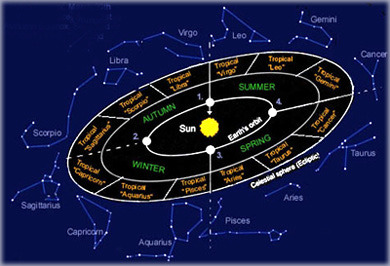
Let’s forget that back in Babylon there were no newspaper horoscopes, and psychological astrology (what we do today) was waiting for the 20th century to come along. People were probably not chirping ‘what’s your sign?’ at ancient Babylonian cocktail parties.
Anyway, here is the basis in truth. There are two zodiacs. Every reasonably serious astrology student and many casual readers know this. One is called the Western or tropical zodiac (the one commonly used in the United States, the UK, Europe, Australia and elsewhere).
The other is called the Vedic or sidereal zodiac (the one used in India). They are part of surprisingly similar systems with many common symbols and are grounded in the same basic concepts, such as the number 12. Both have four elements (earth, air, fire, water) and three triplicities, or types of sign (cardinal, fixed, mutable).
However, the starting point of the sidereal horoscope is measured based on the constellations, and the tropical zodiac is measured based on the seasons. Sidereal means stellar and tropical means based on the tropics, which is how we measure the four seasons.
The ancient Babylonians knew about — and likely developed — both systems; we don’t know which is older, except we do have a clue. Back in Babylon (modern day Iraq, also called ancient Chaldean civilization), agriculture, which depends on the seasons, was an important consideration. It was so important that the Chaldeans are credited with inventing writing so they could record farming methods for later generations. The tropical zodiac was used as a device to measure the seasons — as it is today.
Enter: The Tropical Zodiac
The tropical zodiac begins with something called the Aries Point. You’ve heard this term a lot here; it’s sensitive, because it’s the place where the two zodiacs are reckoned. The Aries Point (also called the Sidereal Vernal Point or SVP) means ‘the apparent position of the Sun on the first day of spring’. Its position is the first degree of the tropical wheel. We measure everything in the tropical zodiac from there.
For example, yesterday was the first day of the Sun in Aquarius; the Sun had moved 300 degrees from the Aries Point, or 10 signs of 30 degrees each, with about 60 days till the first day of Northern Hemisphere spring. It is an orderly system based on real events. What the Chaldeans apparently didn’t know was that the seasons and indeed our whole calendar drifts within the backdrop of the stars. That knowledge doesn’t come to the West untill hundreds of years later.
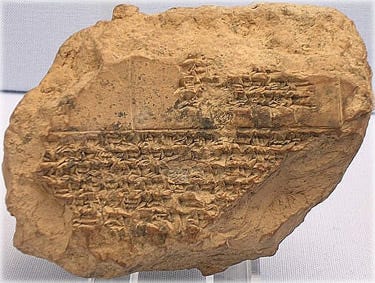
At the time the Babylonian astrologer/astronomer folks were setting up the system, the two zodiacs were more or less aligned. The astrological sign Aries aligned with the constellation Aries. Then, because of a celestial cycle called precession, they gradually shifted “out of alignment”
Today, in fact, the two zodiacs are 23 degrees “out of alignment.” If you’re born during the first 23 days of Capricorn, for example, and you go to India and get a reading they will tell you that your Sun is in Sagittarius.
Note that there is a distinction between a sign and a constellation. Here is how Rob Hand, astrology’s Papa Smurf, explains it: “A sign in astrology is now and always has been exactly 1/12th of the circle, or 30 degrees of 360 degrees. A constellation consists of a visual figure, such as a ram, bull, crab, archer, etc., superimposed upon the stars by the human imaginations of many different cultures.” This is easy, right?
One issue with the constellations is that they vary greatly in size. For example, the constellation Scorpio takes up six degrees of the sky. The constellation Virgo takes up 43 degrees of the sky. None of them are 30 degrees. This created a problem for those trying to measure both time and attributes of nature; they needed some consistency.
Hence, the concept of a sign was developed and incorporated into the evenly-divided wheel of the tropical zodiac. The early Vedic astrologers had to address the same problem of these inconsistently sized constellations. They too divided the sky into 12 even 30-degree slices, but imposed those on the constellations. So, while the actual constellations vary in size, the sidereal zodiac is created by dividing the wheel into 12, just like the tropical zodiac. They just have different starting points.
A Wheel Inside a Wheel
Because the axis of the Earth wobbles, very slowly, the seasons and indeed our whole calendar drifts within the backdrop of the stars. That is to say, every 72 years, the Aries Point moves backwards against the backdrop of the stars by one degree.
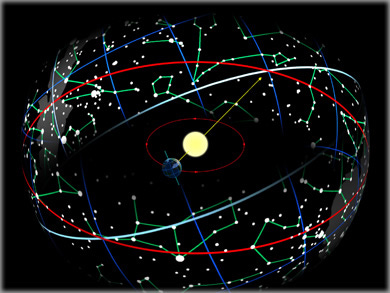
This is called precession, or more accurately, precession of the equinoxes. The effect is that the tropical zodiac is moving like a carousel inside the amusement park of the sidereal zodiac. It takes about 26,000 years for the carousel to go around once. This is called the precessional cycle, and it’s related to the astrological ages — for example, the dawning of the Age of Aquarius. (It’s also related to the 2012 phenomenon — that, another week.)
Note, last week I made an error and said that the first day of spring comes one day earlier every 72 years, and that in 12,000 years Christmas would fall in the middle of summer. You can forget I ever said that. In actual fact, the seasons and the calendar are part of the same system that precesses one degree every 72 years.
As for the Age of Aquarius. What is this about? On the first day of spring (when the Sun reaches 1 Aries of the tropical zodiac, or the Aries Point) the Sun is also aligned with the constellation (and the sidereal sign) Pisces. It’s been that way for nearly 2,000 years — this has been the Age of Pisces.
The Aries Point Gradually Drifts
Because of precessional movement, the Aries Point is gradually — very gradually — moving retrograde from early (sidereal) Pisces toward (sidereal) Aquarius. It’s not going to get there for a while; if we use precession of the Aries Point against the sidereal zodiac as a way to measure the Age of Aquarius, there are about 600 more years of the Age of Pisces.
If we use precession as the only factor, we’re clearly jumping the gun. Yet the Age of Aquarius effect may well be a real thing, however, indicated by many other factors.
So, in a sense the astronomers are right: there is a second zodiac and its existence is common knowledge. But the tropical zodiac, rather than being wrong, is time honored, and it was invented by the Babylonians. It’s a well-designed measurement system, and it works beautifully as a framework within which to tell the story of the world because it follows one of our most poignant experiences on Earth, the turning of the seasons.
But are astronomers really saying that astrology has more validity if we use the sidereal zodiac, or the constellations? Astronomers who take this view are either saying that 1) in their left-handed way, astrology has validity and/or 2) they really think that there is an archer in Sagittarius and a bull in Taurus –that’s why (they are, apparently, claiming) the constellations work better than the signs.
Working with the Two Zodiacs
Making astrology real and useful is all about interpretation. If we start with the fact that there are two zodiacs, tropical and sidereal, then we have something else we can interpret. Much of tropical Aries, for example, overlays sidereal Pisces. That’s a little like saying that if you scratch off the surface of an Aries, you will find something Piscean.
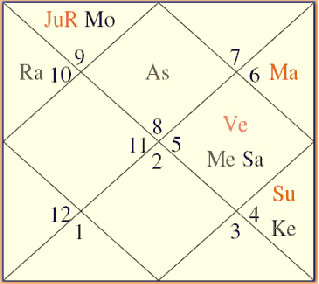
Others take the view that one’s horoscope cast in the tropical system is more about the personality, and the sidereal horoscope gives a picture of a deeper level, such as the soul. Most astrology students will sooner or later cast their sidereal chart to see what is there, and it’s always interesting. The aspects and houses are familiar; most of the signs will be bumped back one.
Many people who follow astrology will eventually get a reading from a Vedic astrologer, which as mentioned uses the sidereal horoscope and ignores the tropical horoscope. The two viewpoints can offer different perspectives. Vedic astrology has completely different spiritual principles, like the firm belief in fate. It’s not a psychology exercise, like modern Western astrology is. For its part, modern Western astrology emphasizes things like choice, growth and getting to know oneself.
A Vedic astrologer is a better person to ask when you will get married, how many children you’ll have and when to start a business. Predicting the time of death is not taboo like it is in modern Western astrology. Note also that Vedic astrology ignores all newly discovered planets (Uranus, Neptune, Pluto, Chiron, etc.), meaning that the slowest planet it uses is Saturn. However, it applies many other cycles and concepts.
One of my first astrology clients, artist Billy Name, is fond of saying that his tropical chart was like a bright tattoo that he got when he was much younger. Later in life, he says his sidereal chart reflects more of who he’s become. He’s saying he’s outgrown his tropical chart and grown into his sidereal chart. I think this is a healthy outlook and reflects his creativity and open-minded approach to astrology, which he loves to play with. Other approaches to the theme of growth are working with transits and the progressed horoscope.
Astrology is a Study in Layers of Existence
If you study astrology, you see all kinds of layering effects going on, and the tropical/sidereal theme is just one of them. Even in a basic chart, the houses and the signs overlay one another; and if you follow an older system called whole sign houses (a topic for another article) you can get a third layer. Add the sidereal signs and you get a fourth layer. A good astrologer can juggle all of this at once.
Another way to look at the tropical/sidereal issue involves how the signs influence one another. Let’s use Aries as an example, 23 degrees of which cover sidereal Pisces. The implication here is that if you’re born during the first 23 days of Aries, your Sun will be in the sidereal sign Pisces. But you don’t need to look at a sidereal chart to see this effect working.
When I delineate the properties of Aries for horoscopes and reports, I consider the influence of the 12th solar house of Aries — which is Pisces, to my mind representing a veiled aspect of Aries. I also look at Taurus, the 2nd solar house of Aries, to get a sense of the values system. In other words, I don’t just draw attributes of Aries from Aries alone; I look at the neighboring signs, since these concepts are not operating in a vacuum. I have methods of doing this for all the signs.
So whether you consider tropical Aries as overlaying a bunch of sidereal Pisces, or tropical Aries as having tropical Pisces as its 12th solar house, you have the same basic effect. Still, these things are the maps, not the adventure. They are symbols and signposts and clues and hints and ideas, and a place to let your imagination run wild.
The Thirteenth Sign?
Part two of the hoax — and complicating matters — is the addition of a phony “13th sign” to the mix. Apparently not understanding that the tropical zodiac is separate from the constellations, or admitting that it exists at all, astronomers informed us that there is a 13th constellation, Ophiuchus — and that therefore this means there must be a 13th sign. That does not follow logically.
Even if you really dig Ophiuchus (prohounced oh-fee-you-cus), a word that means snake-handler (much like Aquarius means the Culligan man), that doesn’t make it a sign.
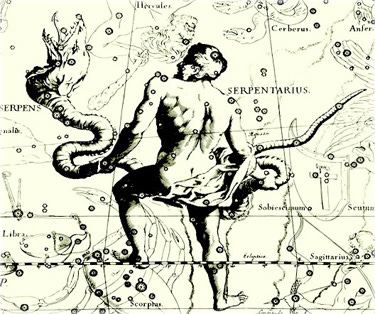
Tropical or Western astrology honors all kinds of stars in the sky that are not officially part of signs. And interestingly, these fixed stars often have meanings totally different than the constellations they are part of.
According to Robert Hand, the notion of a “13th sign” has its origins in a “nouveau astrology” based on an old idea — the 1973 book Sky Diamonds by Owen Rachleff. But this does not “correct” anything. There are all kinds of astrological concepts floating around, and authors usually need a gimmick to sell a book. For Rachleff, that was “adding a sign to the zodiac.”
“It was not accepted by astrologers at that time and the notion faded away. Now it’s back, and younger astrologers will have to decide its fate.” Nor was Ophiuchus accepted by the ancient Babylonians, or the Vedics.
And it keeps coming back, largely because those claiming to be scientists like to play pranks on those they consider inferior to them — people who are into astrology.
Then it was Picked up as Science Fiction
According to Jonathan Cainer, it was floated again in the late 1990s by a sci-fi author named John Sladek — a satire writer who died in 2000.
Sladek liked to prank astrology, and he has a whole novel about a fictitious 13th sign based on Ophiuchus he called Arachne that was, in his novel, ‘suppressed by the scientific community’. With a wee bit of help from the Royal Astronomical Society, that bit of disinformation made newspapers worldwide.
However, when it surfaced once again last week, Ophiuchus panicked astrology fans, giving them another reason to think that the dates of the signs really had to be rearranged.
By now you get the idea — the constellations don’t determine the tropical signs. They’re related; some of them have the same names as the signs; but the zodiac we use is based on the seasons.
Now, it’s true that Ophiuchus touches the ecliptic — barely. But it has never been considered a constellation worthy of consideration under any traditional system. That doesn’t mean we can’t try it out. Of course we can experiment (as astrology has done for millennia with other fixed stars, and as we do today with things like the Galactic Center) — but it’s a good idea to remember the difference between a sign and a constellation is not splitting hairs; they are two kinds of critter entirely.
The tropical, sidereal and even Chinese systems are based on a cycle of 12, a concept which Hand says was “running around everywhere” in the ancient world. It was natural — as a creation of the human mind, which loves symmetry — that the zodiac would be simplified into a system of 12 equal parts.
Twelve is not a prime number; it can be divided many ways with ease, and is the basis for the creation of aspects. For example, a square is a distance of three signs; a trine is a distance of four signs; an opposition is a distance of six signs.
Remember Your Philosophy — and Nature
“The zodiac evolved when the evolution of human consciousness reached a point where there was a sense of mathematics and geometry that offered an abstract view of the universe,” said David Arner, a New York-based astrologer and one of my teachers.
“This eventually led to the whole philosophy of the Western world, which dealt with the differences between the appearances of things and the reality, and this is what Plato was grappling with. Everyone in the intellectual world had to cope with this.
Coming on the 19th and 20th centuries, we kind of forgot that the cosmos seems to have these two realities. One of them is what you can see and the other is what you can conceive of.” The sidereal constellations are in the first category; the tropical signs are in the second.
“What the eye can see are a number of constellations of different sizes. What we idealize mathematically is a horoscope of 12 equal signs,” he said.
“The idea of saying that there are supposed to be 13 signs is ludicrous. That is not a number that we live in. We live in a world in our minds, and we know that there’s a symmetry that is real. So 12 is a number that reflects the symmetry and all of its parts, and 13 just doesn’t do that. It does other things, but it doesn’t do that.”
None of this Changes Who You Are
One of the things it doesn’t do is change who you are. If you identify with a snake handler, then you have something to explore — and of course, there is more to every symbol than meets the eye. Surely, being able to tame a dangerous viper is a skill that would come in handy in our current social and political environment.
And, obviously, the snake represents the vital force, kundalini, and is a frequent image of sexuality. The ‘snake master’ is someone who can handle this energy. It’s an interesting image to have right next to Scorpio, the sign that represents self-mastery through the awareness of sexuality, death and transformation. These are themes for all seasons.
Yet if you’re doing Western astrology, the thing to remember is that our concept is based on cycles related to the seasons. These are are actual events both in concept and in physical reality. Rob Hand gives a beautiful image of how this looks.
The Earth Moves and the Seasons Change
“As the Earth moves about the Sun the seasons change,” Hand wrote in a recent article. “If you could speed up this motion and look at the Earth from space, you would see on the continents a movement of green (from vegetation) moving up and down. At the beginning of the Northern Hemisphere’s spring (beginning of Sun in Aries) you would see it moving up to the north of the equator, reaching its greatest development in the north at the beginning of the northern hemisphere’s summer (Sun in Cancer).
Then it would begin to move south until at the beginning of the northern autumn, the southern hemisphere’s spring (Sun in Libra) it reached the most southerly part at the beginning of the southern summer (Sun in Capricorn). After that the belt of green begins to move north again.
This is the “pulse of life” that the late Dane Rudhyar referred to in his book of the same name. We believe that the origin of the qualities that astrologers associate with the signs comes from this movement of life’s energy on Earth. In the last analysis, the zodiac may not be so much due to the astronomy by itself as it is to the Earth’s biosphere. The signs are simply a measure of where we are in the year and the flow of life on Earth as it relates to the heavens.”
Yours & truly,
“I have hundreds of examples of your guidance that saved me from other possibly harmful trajectories in my life. I can’t thank you enough for your impeccable insights that you have shared with me over the years. I’ll thank you anyway. Thank you, thank you thank you!”
— Elizabeth S.





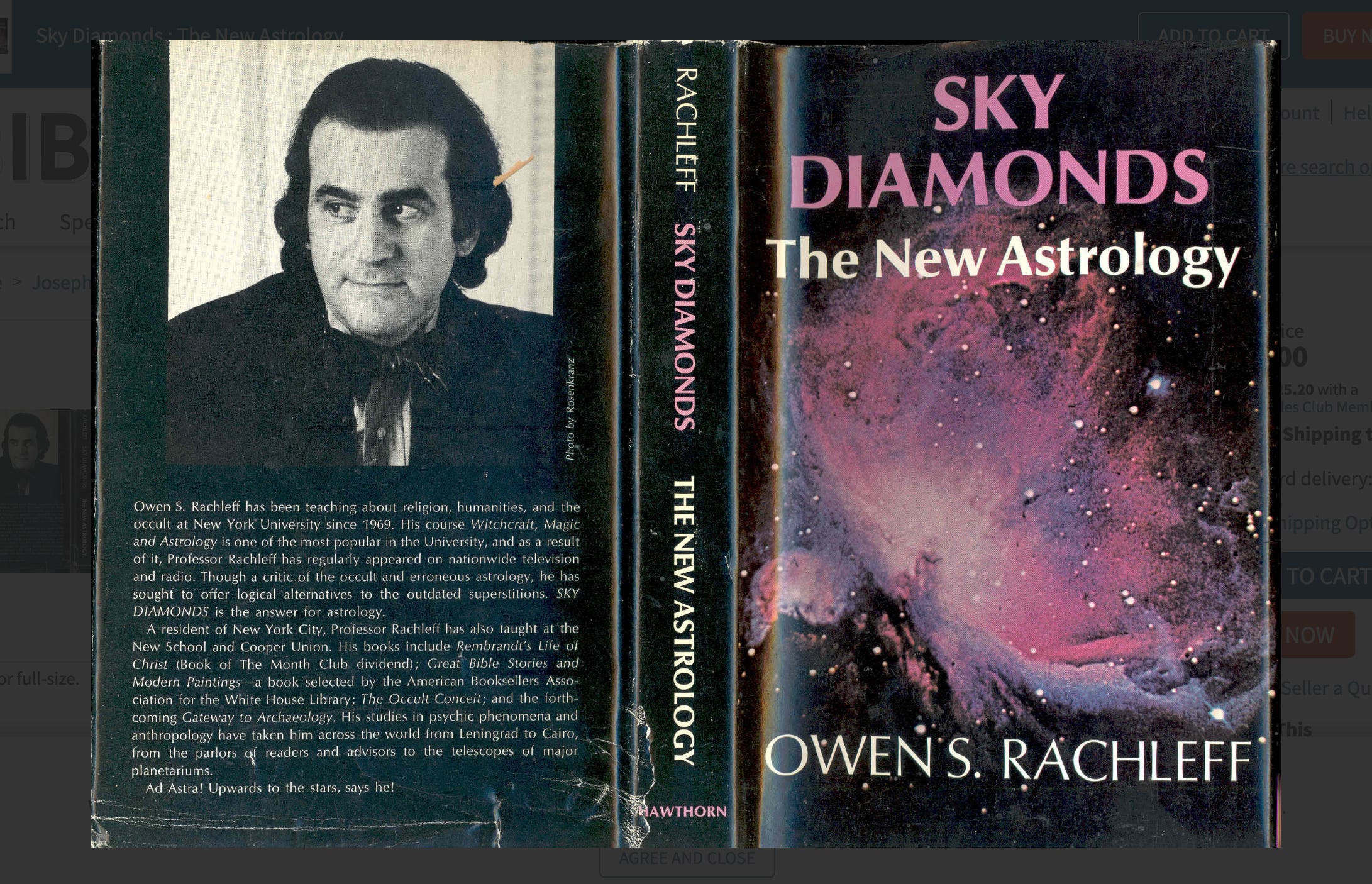

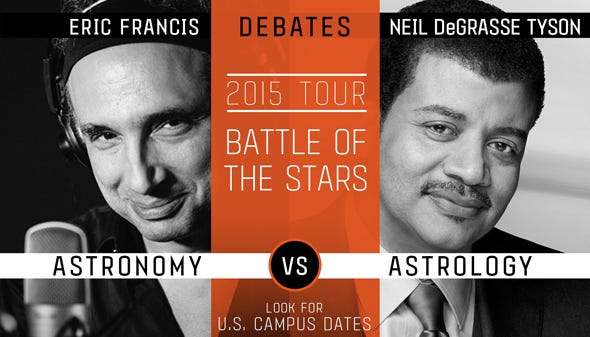
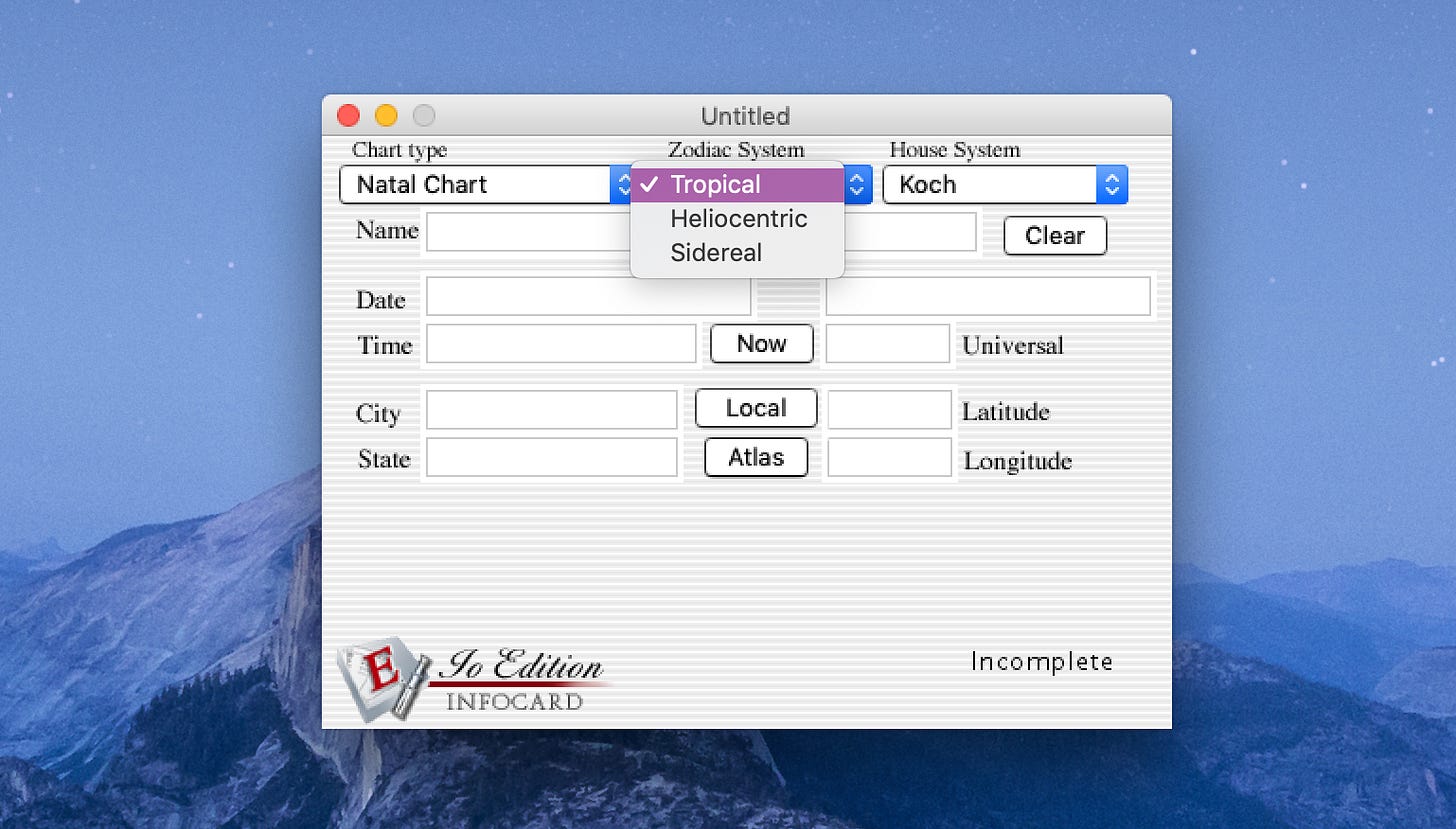


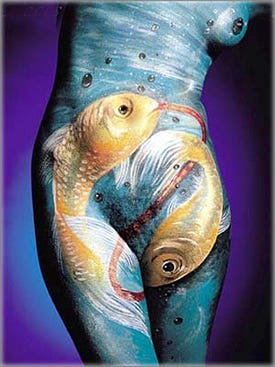



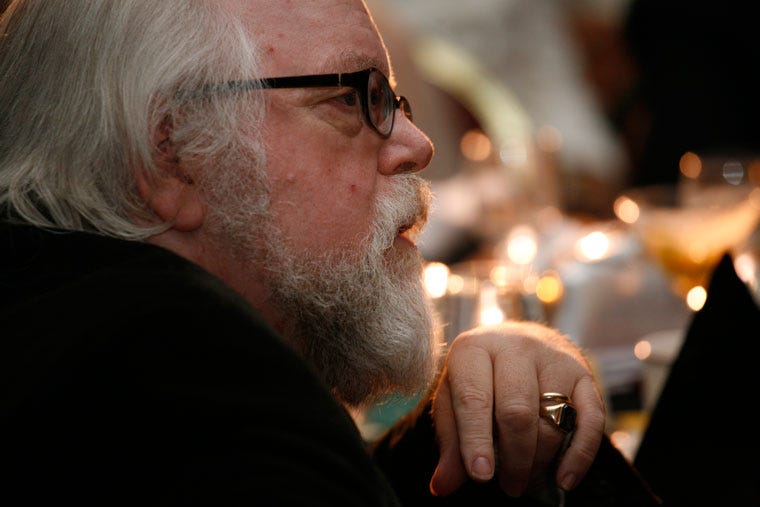

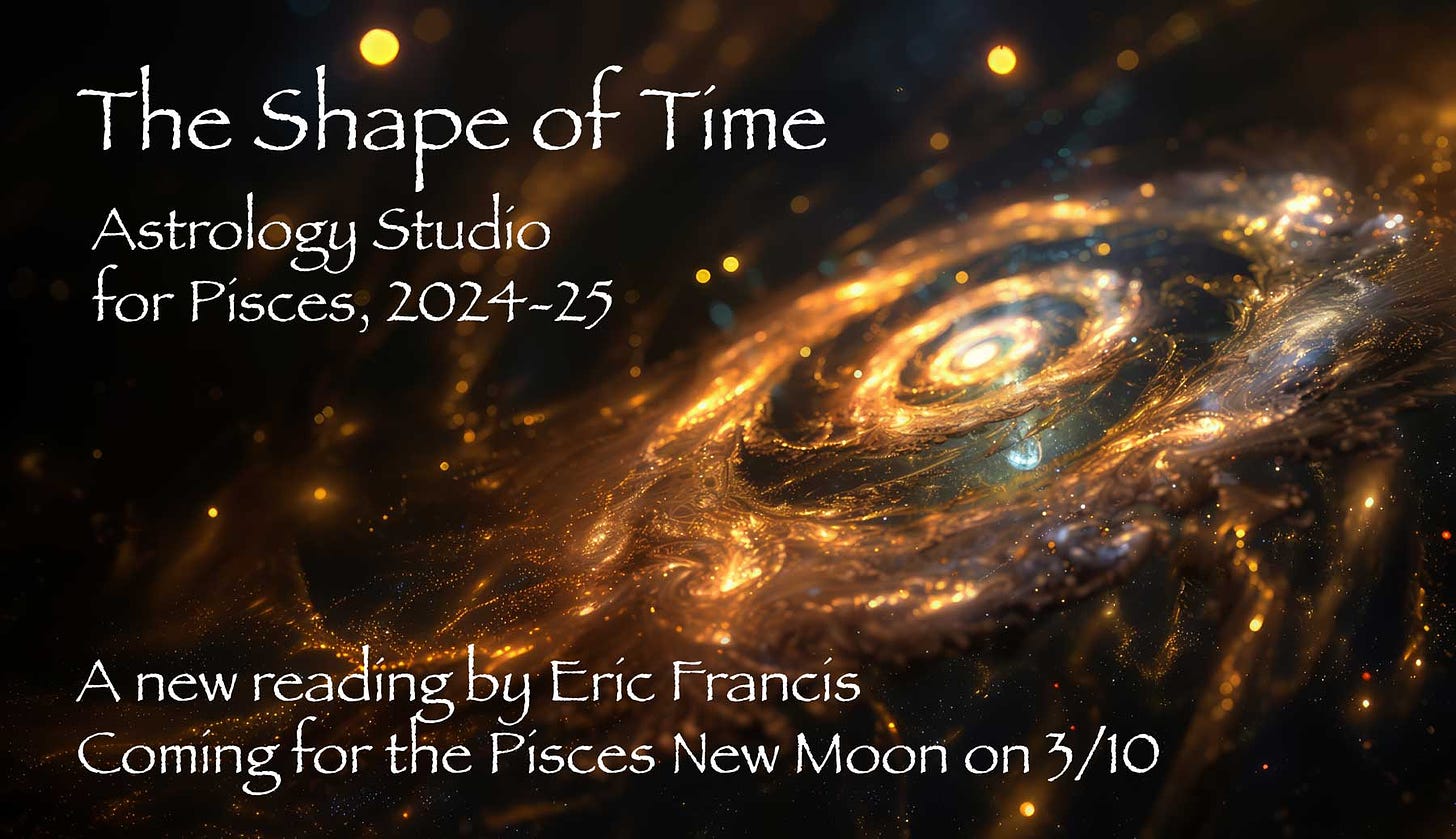
My dear Eric F. Coppolino
For you, who enjoys a good joke—have you ever considered that the name of the faux 13th sign, Ophiuchus can also be phonetically pronounced as ‘oh-fuck-us? tee-hee🤭
Always 💕 Love, P. Anaella
What a great read Eric! My brain just got a wee bit clearer on these topics. Sending my appreciation, Denisa